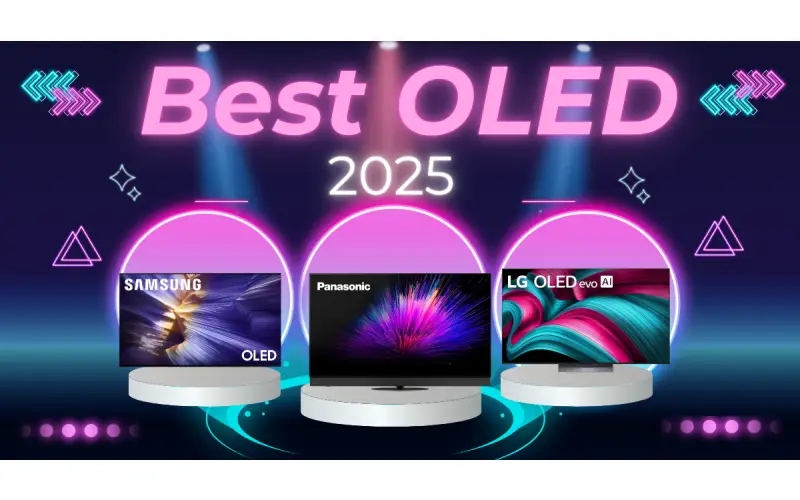By: Dipin Sehdev
At CES 2025, a sliver-thin prototype display quietly drew crowds to Samsung Display’s booth—an early glimpse at what could be the future of mobile and computing screens. That display, now officially branded as UT One OLED, is part of Samsung Display’s ambitious effort to redefine thin, light, and efficient OLED technology for IT devices.
As of Computex 2025, Samsung Display has confirmed that its Ultra-Thin (UT) OLED panels will enter mass production in 2026, offering a path toward lighter, slimmer, and more power-efficient laptops, tablets, and potentially even monitors. While the industry has spent years chasing incremental gains in display quality, UT OLED signals a radical leap in form factor—0.6mm thin, nearly the width of a credit card.
In this article, we’ll dive deep into what makes UT OLED unique, how Samsung Display is achieving these advancements, and what the implications are for the consumer tech landscape.
A Technological Turning Point
Over the past decade, display technology has evolved in lockstep with the growing demand for portability. As consumers ask more from their mobile devices—more performance, more battery life, more screen—manufacturers have responded with tighter integrations, lighter materials, and ever-thinner chassis. Yet, displays remain among the bulkiest and most power-hungry components in laptops and tablets.
Samsung Display’s UT One OLED addresses this challenge head-on. At just 0.6mm thick, it is approximately 30% thinner than conventional OLED panels, according to the company. For reference, the average credit card measures about 0.76mm, making UT OLED a milestone in industrial design. The panel is also about 30% lighter and consumes 30% less power than current-generation OLEDs.
That’s not just impressive—it’s transformative.
A Closer Look at UT One OLED
What is UT OLED?
Ultra-Thin OLED, or UT OLED, is a new generation of AMOLED display technology engineered for IT devices. Samsung Display is positioning UT One as the first OLED panel in its class to support a variable refresh rate (VRR) as low as 1Hz and as high as 120Hz. That range is made possible by a new Oxide Thin-Film Transistor (TFT) backplane—a critical component responsible for driving the pixels in an OLED panel.
Oxide TFTs are prized for their low leakage current and high electron mobility, enabling the display to operate efficiently at extremely low refresh rates without introducing luminance instability or flicker. In practical terms, this means that a laptop or tablet using UT One OLED can dynamically adjust its refresh rate, dropping to 1Hz when idle to conserve battery, then ramping up to 120Hz during gaming or video playback.
This adaptive refresh rate isn’t new in the smartphone world—Samsung’s Galaxy and Apple’s iPhones already use similar techniques—but bringing it to OLED displays in IT devices is a major leap. Combined with the panel’s ultra-slim profile and lightweight design, UT One OLED paves the way for new form factors across mobile computing.
Thinner, Lighter, Greener
The move to UT OLED is not just about aesthetics—it’s also about sustainability and user experience. Traditional OLED panels often consist of two glass layers to encapsulate the organic material, adding both bulk and weight. UT One retains a glass substrate for structural integrity but incorporates Thin-Film Encapsulation (TFE) to protect the OLED layers. TFE enables Samsung to shave millimeters—and grams—off the panel without sacrificing durability.
According to Samsung Display, this structural refinement reduces panel weight by up to 50 grams in a typical 14-inch laptop display. While 50 grams might not sound like much on paper, it’s a significant change when you consider the cumulative impact on overall device weight, thermals, and portability.
Then there’s energy efficiency. In mobile computing, every watt saved translates to longer battery life and fewer heat-related performance throttles. UT OLED’s Oxide backplane and variable refresh operation cut power usage by roughly 30%, allowing devices to last longer on a single charge without compromising visual quality.
Inside Samsung’s 8.6G Production Line
Behind the UT OLED initiative is a multibillion-dollar investment in Samsung Display’s Asan campus in South Korea. The company is currently building out an 8.6-generation (8.6G) IT OLED production line dedicated to Oxide-based OLED panels, including UT One. The term “generation” here refers to the size of the glass mother substrate used in production. An 8.6G fab processes sheets roughly 2,200mm x 2,500mm in size, optimized for cutting larger panels suited to laptops and tablets.
Samsung has earmarked approximately $3.1 billion for this facility, highlighting its belief in OLED’s future beyond smartphones and TVs. With LCD panel production now fully phased out, Samsung Display is doubling down on OLED as its flagship display technology.
Mass production of UT One OLED is scheduled to begin in 2026, with full-scale rollouts expected later that year. Given Samsung Display’s extensive client list—which includes Apple, Dell, Lenovo, Asus, HP, and of course, Samsung Electronics—it’s almost certain that the technology will find its way into mainstream laptops, tablets, and hybrid devices within 12 to 18 months of production start.
What’s in a Name? UT One vs. Traditional OLED
While “UT One” is a marketing designation, it reflects a broader philosophy at Samsung Display: the convergence of thinness, efficiency, and performance in a single panel. Unlike foldable OLEDs, which rely on plastic substrates and complex hinge mechanisms, UT One is a rigid OLED panel intended for standard clamshell and slate-style designs.
That distinction matters. Flexible OLEDs are marvels of engineering but come with compromises in durability, cost, and visual fidelity. UT One, by contrast, offers manufacturers a drop-in replacement for existing panels—only now it’s thinner, lighter, and more efficient.
Another key distinction lies in the use of TFE. While flexible OLEDs have used Thin-Film Encapsulation for years, applying this technology to rigid glass-based OLEDs is a novel approach that helps bring the benefits of flexibility (thinness, weight savings) to traditional form factors without the fragility of full plastic substrates.
The Competitive Landscape
Samsung isn’t the only display manufacturer exploring ultra-thin form factors. LG Display has also been investing heavily in OLED technologies for laptops and monitors, and Chinese firms like BOE and Visionox are aggressively scaling up OLED capacity. However, Samsung Display retains a significant lead in process maturity and customer reach—particularly in high-spec devices where performance and energy efficiency are paramount.
It’s worth noting that the UT One OLED is debuting at a time when device makers are doubling down on thin-and-light product lines. Samsung’s own Galaxy Book series is trending thinner each generation, and Apple is widely expected to unveil its thinnest iPhone ever—the iPhone 17 Air—by fall 2025. Ultra-thin displays are a natural complement to this trend, enabling OEMs to differentiate on design without compromising on performance.
Implications for End Users
What does this mean for consumers?
Expect 2026 and 2027 to usher in a wave of ultra-slim laptops and tablets boasting better battery life, lighter weights, and more immersive displays. UT OLED also opens doors for new use cases in wearables, AR/VR, and even foldable hybrids, where thinness and efficiency are critical design constraints.
For content creators and gamers, the ability to support 120Hz refresh rates while maintaining OLED’s hallmark color fidelity and contrast will be particularly appealing. And for enterprise users, lighter laptops with all-day battery life and improved thermal performance will make UT OLED a compelling upgrade.
Challenges Ahead
Despite the optimism, there are real challenges to overcome. Ultra-thin displays may raise concerns about rigidity and durability, particularly in devices that are frequently transported or subjected to torsional stress. Samsung Display will need to ensure that UT One panels can withstand daily wear and tear without developing artifacts or physical damage.
Cost is another consideration. While Samsung hasn’t disclosed pricing, it’s likely that UT OLED will initially carry a premium over conventional OLED panels. That could limit adoption to flagship models in the near term, though economies of scale and broader demand could drive costs down over time.
There’s also the matter of integration. OEMs will need to redesign internal architectures—thermal systems, batteries, housings—to fully take advantage of UT OLED’s thin profile. In some cases, a thinner display may allow for a larger battery, additional I/O, or simply a lighter product overall.
A Glimpse Into the Future
Samsung Display’s UT One OLED represents more than just a new type of screen—it’s a foundational technology that enables a new class of devices. Just as OLED transformed smartphones and TVs with its perfect blacks and vibrant colors, UT OLED is poised to transform mobile computing with ultra-thin form factors and energy-smart features.
As the first production-ready IT OLED with 1Hz-120Hz variable refresh on an Oxide backplane, UT One is an engineering feat that builds on more than a decade of OLED leadership. And while it won’t arrive in consumer products until 2026, its debut at CES and Computex 2025 has already set the stage for the next leap in display innovation.
For designers, engineers, and end-users alike, UT OLED isn’t just about what’s possible—it’s about what’s next.
Conclusion
From the labs of Asan to the show floors of Taipei, Samsung Display’s UT One OLED is shaping up to be one of the most consequential advances in display technology in years. By marrying ultra-thin construction with adaptive refresh, reduced power draw, and lighter components, Samsung is laying the groundwork for a new generation of premium devices—devices that are not just incrementally better, but categorically different.
And with mass production on the horizon, the age of ultra-thin, ultra-efficient computing may be closer than we think.





